Stories from the Road
Latin America
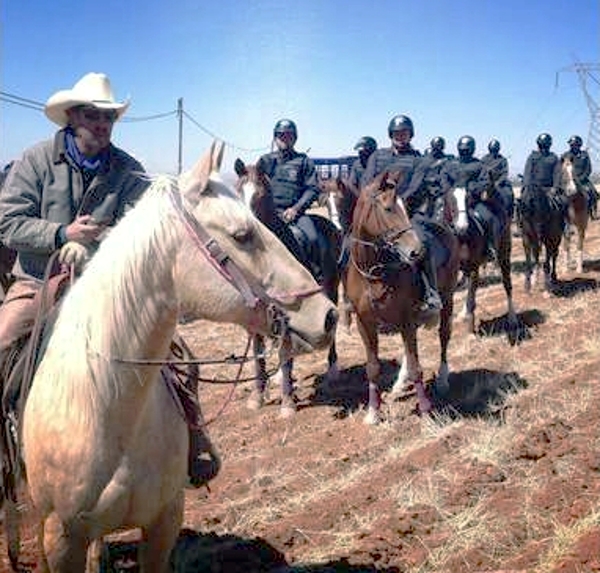
|
Stories from the Road Latin America |
|
Filipe Masetti Leite (above), was inspired by Tschiffely’s Ride to ride from Canada to Brazil. He is seen being escorted by police through a dangerous part of Mexico. After going through twelve countries and spending two years in the saddle, Filipe reached his family’s home in Brazil in 2014. Then Filipe decided to journey to Tierra del Fuego He set off in April, 2016. The subsequent journey was completed in 2017. Filipe had carried the Long Riders’ Guild flag through sixteen countries and sixteen thousand kilometres lay behind him.
Click on any image to go to the story.
|
Tschiffely’s Ride – The Most Famous Equestrian Expedition In 1925 Aimé Tschiffely, a Swiss teacher living in Argentina, set out on an epic ride with two Criollo horses, Mancha and Gato. The amateur explorer's goal was to travel ten thousand miles from Buenos Aires to Washington, DC, over some of the world's most inhospitable country. Their odyssey lasted two and a half years, forced horses and rider to survive through near-impossible conditions, and ended with a hero's welcome at the White House. This is the story of the astonishing ride that changed the course of equestrian travel history.
|
|
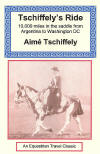 |
Special Illustrated article about Tschiffely’s Ride
In the company of his two horses, Mancha and Gato, Long Rider Aimé
Tschiffely set off from Argentina in 1924. The purpose of the 10,000 mile
journey was to ride from Buenos Aires to Washington DC. What Tschiffely did
not suspect was that ahead of him lay a host of adventures, including rope
bridges, vampire bats, sand storms, treacherous mountains, quicksand and
hostile natives. The Illustrated History of
Tschiffely’s Ride recounts the story of the greatest equestrian epic
of the twentieth century, a journey that came about because a man and his
horses refused to quit - ever! Special photographs provided by the
Tschiffely Literary Estate depict Tschiffely and his horses as they made
their way across deadly deserts, passed through jungles and traversed
sky-high mountain passes. |
|
|
Charles Darwin, Scientist and Long Rider Though he is known today as "the father of evolution," English biologist Charles Darwin was also an avid equestrian traveller. During the five years in which he made his scientific journey around the world, Darwin took every opportunity to explore the continents of South America, Australia and Africa on horseback. The scientist-turned-Long Rider wrote of "the pleasure of living in the open air with the sky for a roof and the ground for a table." Extracts from his round-the-world diary provide clues about his equestrian adventures, beginning with his ride into the jungles of Brazil in 1832.
|
 |
Riding from the Flames When asked in 1879 why she wanted to journey to such an outlandish place as Patagonia, Lady Florence Dixie replied without hesitation that she was taking to the saddle in order to flee from the strict confines of polite Victorian society. “Palled for the moment with civilization and its surroundings, I wanted to escape somewhere, where I might be as far removed from them as possible.” This extract from her book relates how she and her party narrowly escaped a raging fire that swept across the pampas.
|
|
|
Green Hell Many places come to mind when one thinks of the dangerous and unexplored places of the nineteenth century world. Africa and Tibet, for example, both challenged brave explorers in that previous age. Yet one continent offered all the adventure a daredevil could want. South America was still politically unstable and geographically challenging. It was exactly for these reasons that George Whitfield Ray sailed into Buenos Aires in 1889. A Fellow of the Royal Geographic Society, Ray was a part-time missionary and full-time adventure junky. Within a short time he had managed to acquire a job as “Official Explorer for the Bolivian Government”. Shortly thereafter he began a series of explorations which still make for hair-raising reading. His story describes a journey so brutal that it defies belief. The horses were repeatedly attacked by vampire bats. Then Ray and his horses were reduced to sucking dew off leaves to survive. By the time he discovered the “lost” tribe he was seeking, Ray’s clothes were in rags, held together by horse hair thread. The intrepid Long Rider did eventually return to civilization, but not without paying a price for his boldness. He lost two toes to blood-sucking insects whose bites also caused much of the flesh on his feet to rot off.
|
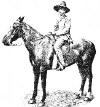 |
From Mexico to Argentina on Horseback Though the Long Riders’ Guild has documented many extraordinary equestrian journeys, few are as unique, nor its rider more mysterious, than Captain W. C. Rose. This English Long Rider rode six thousand miles from Mexico to the Argentine, during which time he survived gun fights, hunted jaguars and crossed the notorious Gran Chaco jungle. The exact year of the journey is not known. This story, written by Rose, was published in London in 1907.
|
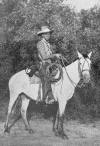 |
Dashing Don Carlos Though the Long Riders’ Guild hosts a pantheon of legends, few could equal the dangerous adventures which “Don Carlos” Thurlow-Craig survived. After have left his native Wales, the footloose youth ventured to South America, where, mounted on his trusty Criollo gelding, Bobby, he rode in Paraguay, Bolivia, Brazil and the Gran Chaco jungle during the early 1920s. This article recalls a man who rode as hard as Tschiffely and wrote with as much passion as Hemmingway.
|
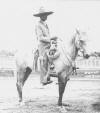 |
A Shoot Out with Mexican Bandits
|
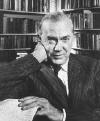 |
The Long Ride in Mexico
|
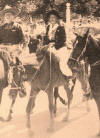 |
The Senorita Passes Through "I was not quite six years old when Ana Beker stayed overnight at our house outside Sandy Spring, Maryland, while her two horses enjoyed the hospitality of our barn," Suzanne wrote. She then provided her eye-witness account of meeting the Long Rider.
|
|
|
Belly Up to the Bar
|
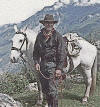 |
Riding Across Mexico’s Sierra Madre Mountains In 1974 American Long Rider Gary Ziegler wanted to make a journey on horseback across Mexico's great divide. In the days before computers and GPS, it was a journey filled with adventure and hardship. (PDF)
|
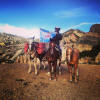 |
Dreams Do Come True When Filipe Masetti Leite was a child, his father, Luis, read Tschiffely’s Ride as a bedtime story to the impressionable little boy. Originally from Brazil, the family had resettled in Canada, where Filipe grew up and attended university. After obtaining a degree in journalism, Filipe faced a difficult choice. Should he get a job, marry his girlfriend and settle down to the type of predictable life which his friends had chosen? Or should he consider undertaking the equestrian journey which his father had longed to make but had been unable to attempt due to family obligations? In 2012 Filipe set off to ride from Calgary, Canada to his family’s ranch at Espírito Santo do Pinhal, Brazil.
|
 |
Hoofprints of Patagonia |
Main Stories from the Road page